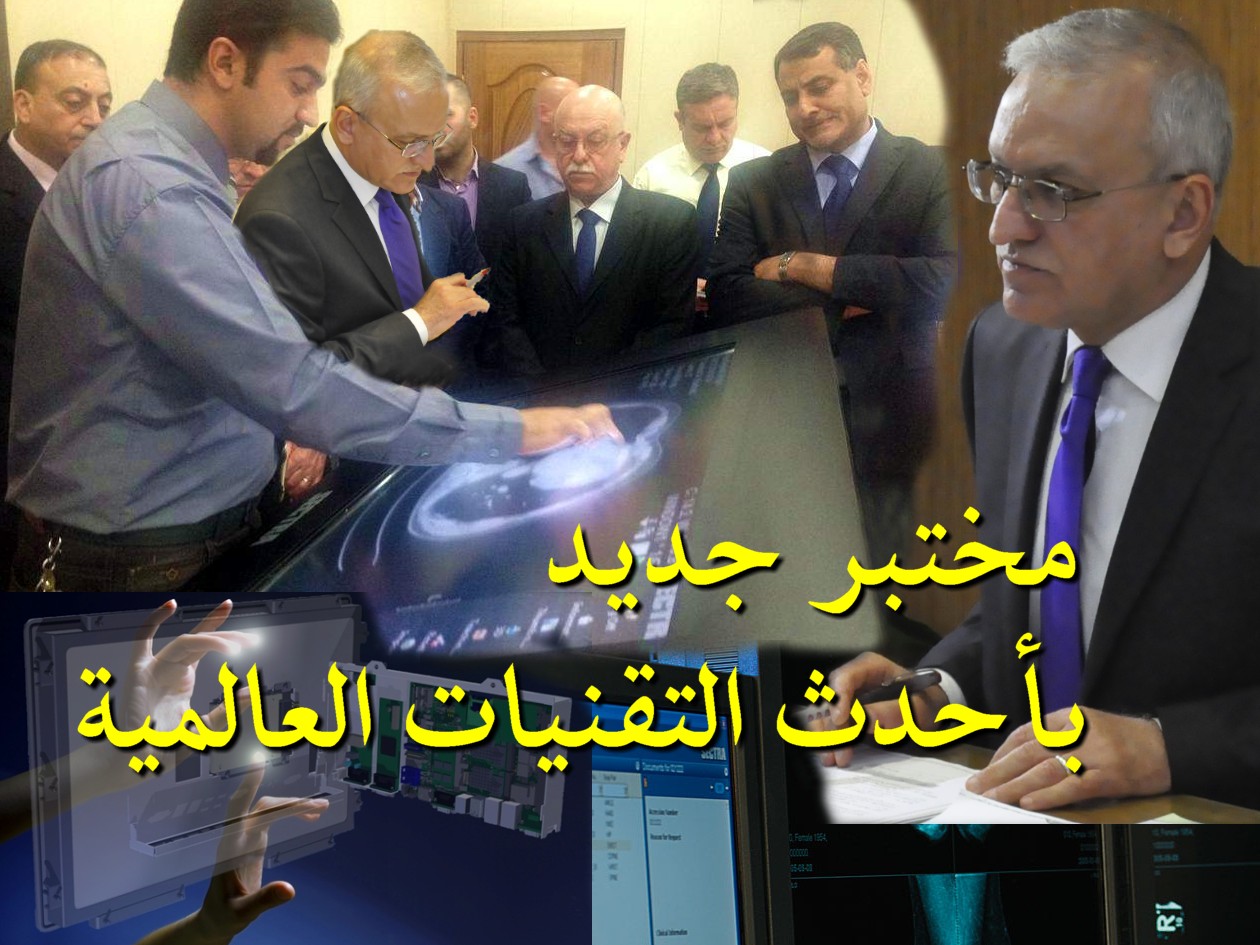New laboratory with the latest international technology
Prof. Dr. Alaa’ Abdulhussein, president of Baghdad university, inaugurated the electronic anatomy lab using a projector “Sectra” which represents a breakthrough in the evolution of medical science and anatomy due to its huge developmental capabilities of processors and accurate diagnosis, which is considered the first scientific laboratory in the Arab world or the Middle East within these scientific specifications which would be a new turning point in the studies of medical science, and this laboratory is considered a teaching laboratory of anatomy by using interactive teaching of small studying groups that is rare including the possibilities and capabilities of interactive learning.

Prof. Dr. Nada Al-Alwan, director of the leading national center of cancer research, dean of the college of medicine, the heads of branches and the faculty members of the college of medicine with groups of students where a brief presentation of the device and its accessories and how the attached devices work displaying anatomy of the body in stereoscopic and interactively between the faculty member and students through the use of displaying interactive monitors, and the device is also used to teach postgraduate and surgery students, as well as the teaching of anatomy for the undergraduate studies. The device is considered an important equivalent for other teaching devices of natural bodies and plastic models, these devices can be compensated to the possibility of collecting the autopsy and radiographs of three-dimensional and through attached cameras to the device where there is the ability to zoom in and direct notation while teaching. The college of medicine at the university of Baghdad is considered the first college that has used this technique in Iraq and the Middle East according to the statement of the Swedish manufacturer company of the device.






http://www.sectra.com/press_releases/en/all/2014/2013/item/Iraqi-university-hospital-enhances-medical-education-with-Sectra%E2%80%99s-visualization-table(818803)
Iraqi university hospital enhances medical education with Sectra’s visualization table
October 17, 2013 – Medical Systems
Baghdad Medical College in Baghdad, Iraq, has invested in the Sectra Visualization Table, a unique tool for interacting with real-size virtual bodies. The university will use the table to enhance its medical education and research. Interacting with virtual bodies at the early stage of medical training provides better understanding of the body’s anatomy and functions, the variation between individuals and better knowledge of more unusual illnesses. Combined, these features will significantly enhance the quality and efficiency of the medicine programs. The table was sold by Orbit Axis AV & IT Solutions Company, Sectra’s newly established distributor for the visualization table in the Iraqi market. The Sectra Visualization Table is a large, multi-touch medical display with software that facilitates interaction with 3D images of the human body created by modern computer tomography or magnetic resonance cameras. Students are able to intuitively zoom in, rotate or cut into the visualized body without using a scalpel or destroying the subject. This means that the same image can be used repeatedly, and the students are able to study the impact of various illnesses on the anatomy in a manner that was not possible in teaching in the past. A unique function of the visualization table is that each university can download and create its own teaching files from its own clinical practices as well as using the preloaded collection of demonstration cases that comes with the table. Sectra Visualization Table is used by universities and training hospitals in more than 15 countries throughout Europe, the Middle East and Southeast Asia. It has been developed in cooperation with Center for Medical Image Science and Visualization (CMIV), Visualization Center C, The Interactive Institute and Link?ping University, Sweden.


